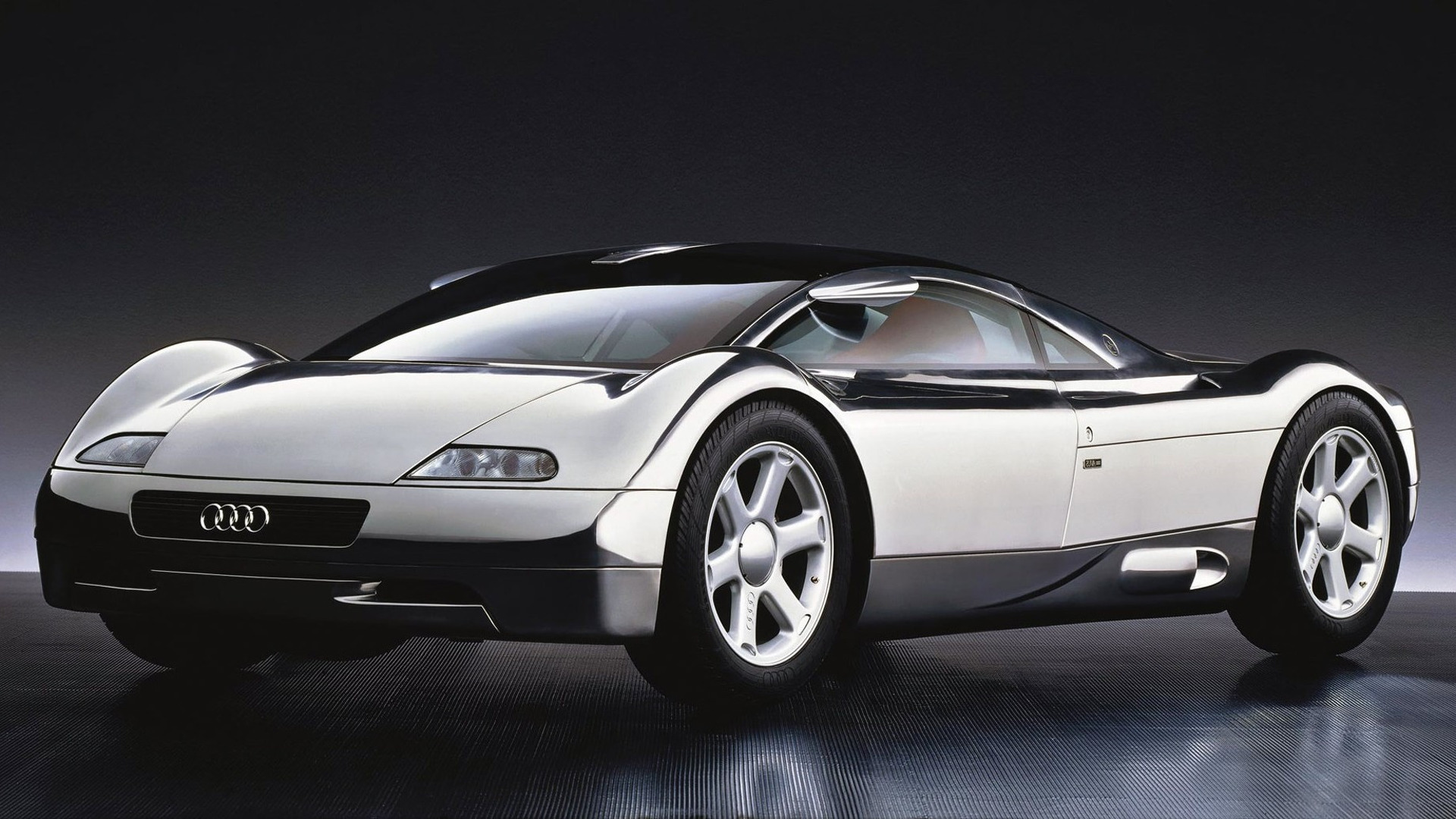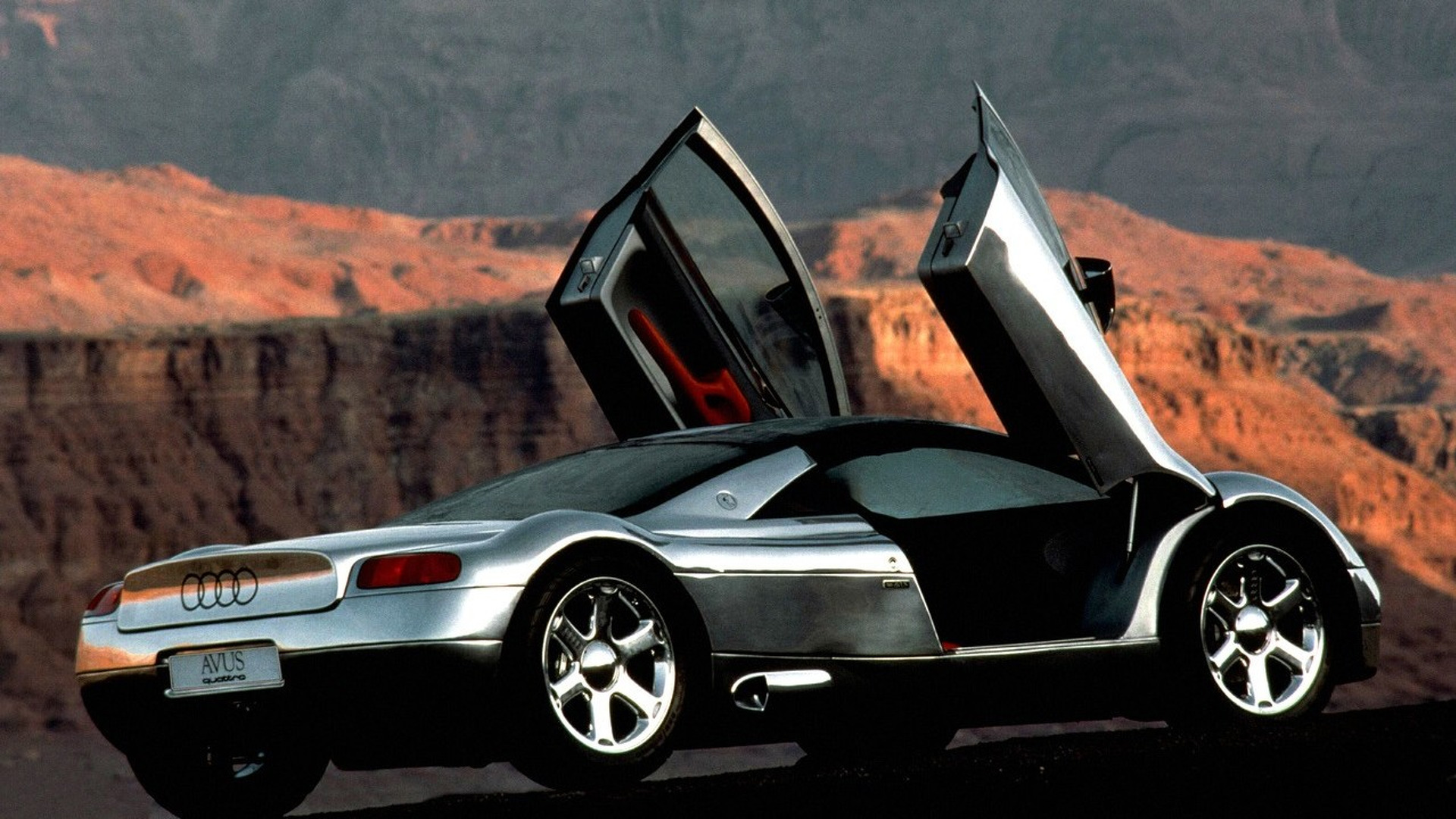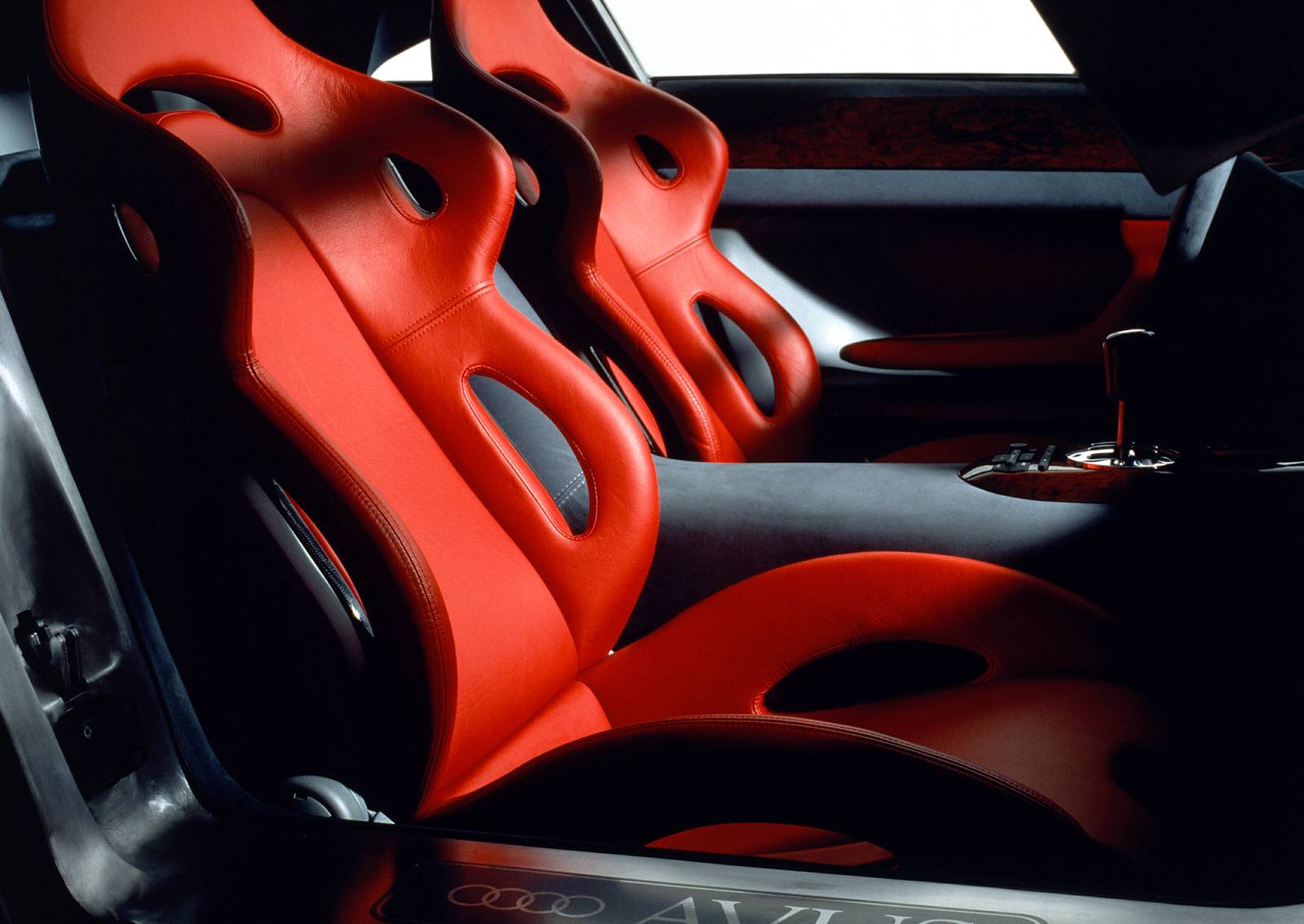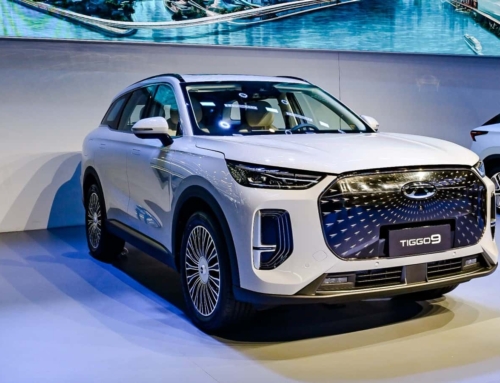In the latest instalment of his Forgotten Concepts series, Double Apex contributor Kyle Kock has a look at Audi’s revolutionary Avus concept.
Follow Double Apex on Instagram and Facebook where we share more car content.
The 1980s were truly Audi’s first decade of prominence on the international motorsport stage. The four-ringed brand aimed at taking on the World Rally Championship, which introduced the Group B rules in 1982, and forever changed rallying with the quattro-all-wheel drive system and turbocharged five-cylinder motors.
The Quattros competed in WRC until the end of the formula in 1986, when Audi turned its focus on the Pikes Peak Hillclimb in Colorado – it had previously won the event with Michele Mouton in 1985 and Bobby Unser earlier in 1986. The Quattro bowed out of international spotlight after dominating the 1987 Pikes Peak Hillclimb at the hands of Walter Röhrl.
Audi then went on to dominate the SSCA Trans-Am series of 1987 with the 200 Turbo quattro, trouncing the competition by winning 12 out of 13 events, before the Americans changed the rules. Luckily, Audi had already planned to focus on the IMSA racing series for 1988 and 1989, where it also ran circles around its rivals.
Looking toward the future
Thanks to its racing successes in the 1980s, Audis had fast become desirable in the eyes of the motoring public and the brand’s ethos of Vorsprung durch Technic (progress through technology) was evident in the development and success of its quattro all-wheel drive system and turbocharged engines. Next on the cards was Audi’s pursuit of lightweight design through the increased use of aluminium.
It had already been making supercar-beating machines, but Audi felt that it needed its own supercar and the Avus concept was birthed. Named after a legendary racing road in Berlin, two aspects of the Avus’ appearance were noteworthy when it made its debut at the 1991 Tokyo Motor Show; the curvy longtail design and the highly-polished raw aluminium finish.
It was supposed to be W12 powered
The Avus had everything else that contemporary supercars were known for, such as bucket seats, scissor doors, a gated six-speed manual gearbox and there was even a NACA duct on the roof that was supposed to help cool the engine. Unfortunately, the W12 was still undergoing development and the engine wasn’t ready when the Avus appeared in public for the first time in Japan. So the car was presented with a dummy motor made of wood and plastic and expertly sprayed to look like the real thing.
Audi had envisioned that the 6,0-litre W12 would make approximately 380 kW, and through the use of the quattro all-wheel drive system the Avus would be able to hit 100 km/h from rest in 3,0 seconds. The slippery shape would also contribute to the 334 km/h top speed.
Tech that carried the brand
Although the Avus was never intended to be a production car, a few elements that were first seen on the concept would go on to feature on models that were given the green light in later years. The use of an aluminium monocoque, dubbed Audi Space Frame was used on the Audi A4 D2 in 1994, as was a variation of the Avus’ taillights. The wheels on the Avus would also be used on models that carried the S designation, such as the S6 and S3, and the W12 motor would eventually be used in a long wheelbase version of the A8 in 2001.
Click here to check out other forgotten concepts as covered on our website









Leave A Comment